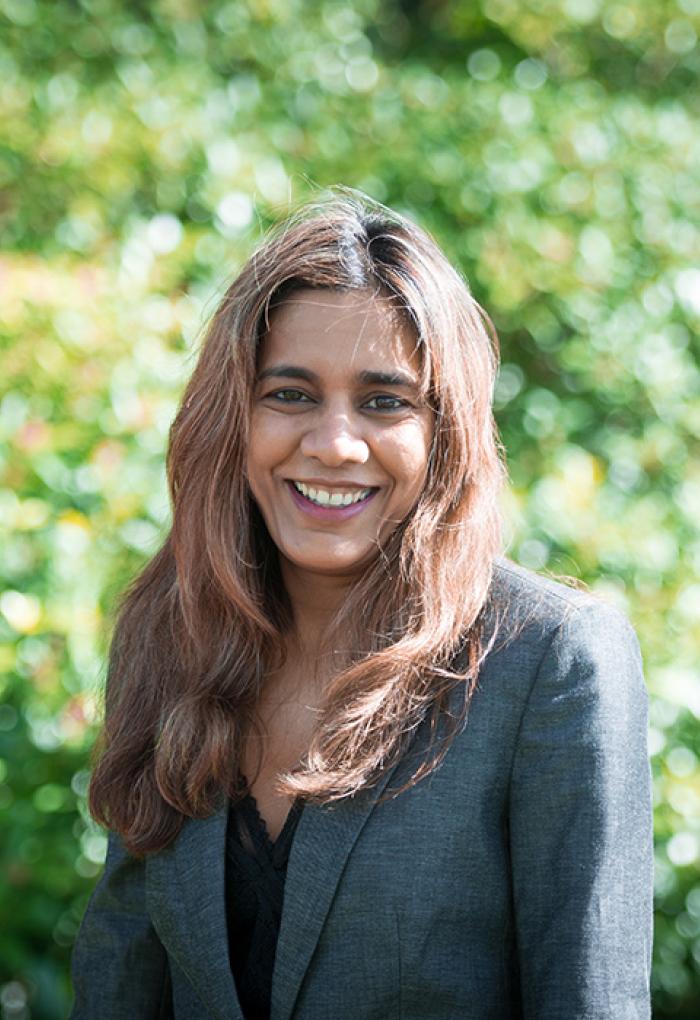SIAM: What can you say about the job market for students graduating with STEM degrees?
BOKIL: In August, the National Association of Colleges and Employers (NACE) reported that the average starting salary for 2020 graduates was a little over $55K – 2.5% above that of the previous year. Among these graduates, those with bachelor’s degrees in statistics and applied mathematics majors were listed in the top ten highest average starting salaries.
According to the US Bureau of Labor Statistics (BLS), employment in STEM occupations is projected to grow more than two times faster than the total for all occupations in the next decade. Occupations in STEM are expected to grow eight percent by 2029, compared with 3.7% for all occupations. Jobs in the mathematical sciences – which includes data science, mathematics and statistics – are projected to grow the fastest, increasing 26.5% within this period.
SIAM: What are some differences between academic and industrial jobs? How can someone decide between pursuing a job in academia, industry or government?
BOKIL: There is considerable overlap in the duties of government labs, industry and academic researchers. On average, the primary distinction is dependent on the funding source, e.g., profit or grant.
In industry, the time horizon for a viable solution to be determined is usually much shorter than in academia, and typically the scope of the problem is more narrow. Communicating results involves group presentations and white papers more often than conference presentations and peer-reviewed journals.
Graduates who want to explore big, possibly unanswerable questions, would likely prefer academia. Those who just want the best or optimal answer and aren't too concerned about aesthetics or generalizations may prefer industry, and those in the middle may prefer government labs.
Graduates who don't enjoy teaching may not like working at a university, while those who dislike worrying about profitability may not want to be in business and industry jobs. International students should be aware that many national lab positions require permanent residence status or citizenship.
As people get older, what they like and dislike changes. Your first job may not be the job that you want, but it can provide you with critical experience to help you get there.
SIAM has a publication called the BIG jobs guide that is a very good source of information for business, industry and government (BIG) jobs. It covers what they are, the differences between them and how and what you need to prepare to interview for them.
SIAM: What are the best ways to sell yourself in our area of work? What is most valuable to employers?
BOKIL: To sell yourself you have to understand your core values, your strengths and weaknesses, your likes and dislikes and in general, have a work identity that you can grow. I think the best way to sell yourself is by being authentic and true to your core values. Self-awareness is critical to advocate for yourself based on your strengths and pursue professional development to continually grow in areas of strength & weakness.
Employers in BIG jobs are looking for certain core competencies in new hires. An important competency in a new hire is teamwork; the ability to collaborate in a diverse team. As a student, if you get the opportunity to participate in research or team teaching classes, you will significantly build this competency. Another competency is the ability to communicate effectively and inclusively across different disciplines. Employers value critical thinking ability, a growth mindset, leadership skills, resilience and grit. Participating in internships can make a huge difference for your job prospects.
A third is an understanding of power and systems – for example understanding systemic issues that cause inequity and proficiency in anti-racist policies to address these issues. Job seekers should know that diversity statements are now part of the application package for many jobs, especially in many universities. Diversity, equity and inclusion initiatives are critical in the workplace and have taken on a new sense of urgency in the need to diversify the workforce and create equitable, welcoming and inclusive workplaces. Look for employers that view applicants holistically and that make it easy for employees to be their whole selves at work.
SIAM: What makes a resume stand out?
BOKIL: A resume that has exactly what the hiring organization is looking for and that they can discern with very little effort will stand out. Read the position description carefully, know what the qualifications for the job are, and if you have these qualifications, make sure to showcase them in your resume. In some cases, even if you don’t have the exact qualifications asked for, you may have skills that are transferable. Make sure to indicate how your skills transfer to the qualifications that the organization is looking for.
Don’t be too wordy – these organizations are evaluating many many applicants. Don’t give information that is not asked for or is irrelevant to the position, even if it sounds great, unless it is transferable in some way to the position. Finally, the resume should look professional. Make sure there are no typos, because these can feed into a reviewer’s implicit bias.
SIAM: What should people do before heading into an interview or career fair to be best prepared?
BOKIL: Think about projects you have worked on, and be ready to enthusiastically describe your contributions. If you haven't yet had research or internship experience, discuss an extension to a homework problem that you may have pursued on your own, or a research paper you have enjoyed reading. Think about potential generalizations to problems you've studied; if you are asked about a problem that you have not worked on, try to make a connection to what you are familiar with. Remember, they are likely looking for someone to work with them to solve problems that don't even exist yet, and could use your expertise.
SIAM: What resources exist out there to learn more about career fair and interview prep?
BOKIL: Start with your academic or research advisor and resources in your department, college and university career centers. “The Professor Is In,” by Dr. Karen Kelsky, academic career advisor and consultant, is a great resource, as well as articles in Inside Higher Ed and The Chronicle of Higher Education. Look on professional society websites like SIAM, Mathematical Association of America, American Mathematical Society and the Association for Women in Mathematics, to develop a professional network or become a part of local student chapters of these organizations.
SIAM: Any other career prep or interview advice for those in the job market?
BOKIL: Attend conferences, develop a professional network and be on the look out for school or affiliation connections – same Ph.D. institution as your advisor, for instance! Don’t be afraid to ask for help. Send emails to people who will be at a conference you’re attending and ask for five minutes of their time, or contact recent alumni and ask about their jobs. Ask your internship or research mentor for suggestions!
For those not yet on the market, find an internship or conduct summer research. Get to know more senior students so that you can reach out to them later.
For more advice on preparing for a career in STEM from Bokil, watch her joint presentation at the SIAM Career Fair and read Inside-Out: A value based approach to industry job hunting, published in SIAM News, January/February 2019.





